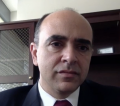- Home
- Transcatheter Aortic Valve Replacement: An Update in Bicuspid Aortic Valve Disease
Transcatheter Aortic Valve Replacement: An Update in Bicuspid Aortic Valve Disease
- Intervention
- Structural Heart Disease
Available Credit:
- 1.00
Course Published On:
Course Expiry Date:

Overview
Considering the promising outcomes and FDA approval in low-risk patients, the number of transcatheter aortic valve replacement (TAVR) procedures is expected to increase significantly in the coming years. According to the most recent data presented at the American College of Cardiology (ACC) 2020, bicuspid aortic valve disease (BAV) patients who undergo TAVR procedures had a low risk of death or disabling stroke and high rate of success with a newer self-expanding artificial valve (Evolut supra-annular self-expanding valves, Medtronic). Further, BAV patients reported to have a similar rate of death compared with tricuspid aortic valve disease patients following TAVR using the balloon-expandable valve (Edwards Sapien 3, Edwards Lifesciences).
Improving efficacy and reduction in operator variability is essential to ensure the adoption of TAVR for BAV patients. In particular, the BAV morphologies will remain challenging and require accurate pre- and peri-procedural work up.
This programme has therefore been designed for an audience of cardiologists and surgeons to build their understanding of bicuspid valve disease and classifications, clinical trial data supporting TAVR in low-risk bicuspid patients, implant techniques, and device considerations for bicuspid patients.
Support Statement
This activity has been supported by an unrestricted educational grant from Medtronic.
Disclosure
In compliance with EBAC / EACCME guidelines, all speakers/chairpersons participating in this programme have disclosed or indicated potential conflicts of interest which might cause a bias in the presentations.
The Organising Committee/Course Director is responsible for ensuring that all potential conflicts of interest relevant to the event are declared to the audience prior to the CME activities.
Terms & Conditions
Radcliffe Education requires contributors to our CME programmes to disclose any relevant financial relationships that have occurred within the past 12 months that could create a conflict of interest. These will be identified in the faculty section if applicable.
Instruction to Participants
There is no fee for taking part in this online learning activity.
Activities are designed to be completed within 60 minutes and must be completed by the registered user. Physicians should only claim credits for time spent on the activity. To successfully earn credit, participants must complete the activity in full in the indicated time frame.
To complete the course and claim certification participants must:
1. Read the course outline information supplied and complete pre-test questions if supplied prior to starting the activity. Users must read and study the activity in its entirety before completing the post-test questions.
2. Your results will be automatically saved and if a pass score is achieved (where applicable), you may be eligible to claim credit for the activity and receive a certificate of completion.
Target Audience
- Interventional cardiologists
- General cardiologists
Learning Objectives
Upon completion of this activity, participants will be able to:
- Describe the latest data in bicuspid valve disease and understand the classifications
- Critically evaluate clinical trial data in TAVR in low-risk bicuspid patients
- Review implant techniques and device considerations for bicuspid patients
Module |
Title |
Duration |
Speakers |
|---|---|---|---|
| 1 | Programme introduction and TAVR in low risk bicuspid patients: critical review of the clinical evidence | Nicolas M Van Mieghem (Erasmus Medical Center, Rotterdam, NL) Basel Ramlawi (Valley Health System, Virginia, US) | |
| 2 | Implant techniques and devices selections for bicuspid patients | Didier Tchétché (Clinique Pasteur, Toulouse, FR) Nicolas M Van Mieghem (Erasmus Medical Center, Rotterdam, NL) | |
| 3 | TAVR in bicuspid patients: Case reviews | Firas Zahr (Oregon Health and Science University, US) Nicolas M Van Mieghem (Erasmus Medical Center, Rotterdam, NL) | |
| 4 | Discussion and Q&As | Nicolas M Van Mieghem (Erasmus Medical Center, Rotterdam, NL) Basel Ramlawi (Valley Health System, Virginia, US) Didier Tchétché (Clinique Pasteur, Toulouse, FR) Firas Zahr (Oregon Health and Science University, US) |
Programme introduction and TAVR in low risk bicuspid patients: critical review of the clinical evidence
Duration:
Speakers: Nicolas M Van Mieghem (Erasmus Medical Center, Rotterdam, NL) Basel Ramlawi (Valley Health System, Virginia, US)
Implant techniques and devices selections for bicuspid patients
Duration:
Speakers: Didier Tchétché (Clinique Pasteur, Toulouse, FR) Nicolas M Van Mieghem (Erasmus Medical Center, Rotterdam, NL)
TAVR in bicuspid patients: Case reviews
Duration:
Speakers: Firas Zahr (Oregon Health and Science University, US) Nicolas M Van Mieghem (Erasmus Medical Center, Rotterdam, NL)
Speaker
The event ‘Transcatheter Aortic Valve Replacement: An Update In Bicuspid Aortic Valve Disease’ is accredited by the European Board for Accreditation in Cardiology (EBAC) for 1 hour of external CME credits.
Each participant should claim only those hours of credit that have actually been spent in the educational activity. EBAC works according to the quality standards of the European Accreditation Council for Continuing Medical Education (EACCME), which is an institution of the European Union of Medical Specialists (UEMS).
Through an agreement between the European Board for Accreditation in Cardiology and the American Medical Association, physicians may convert EBAC External CME credits to AMA PRA Category 1 Credits™. Information on the process to convert EBAC credit to AMA credit can be found on the AMA website.













